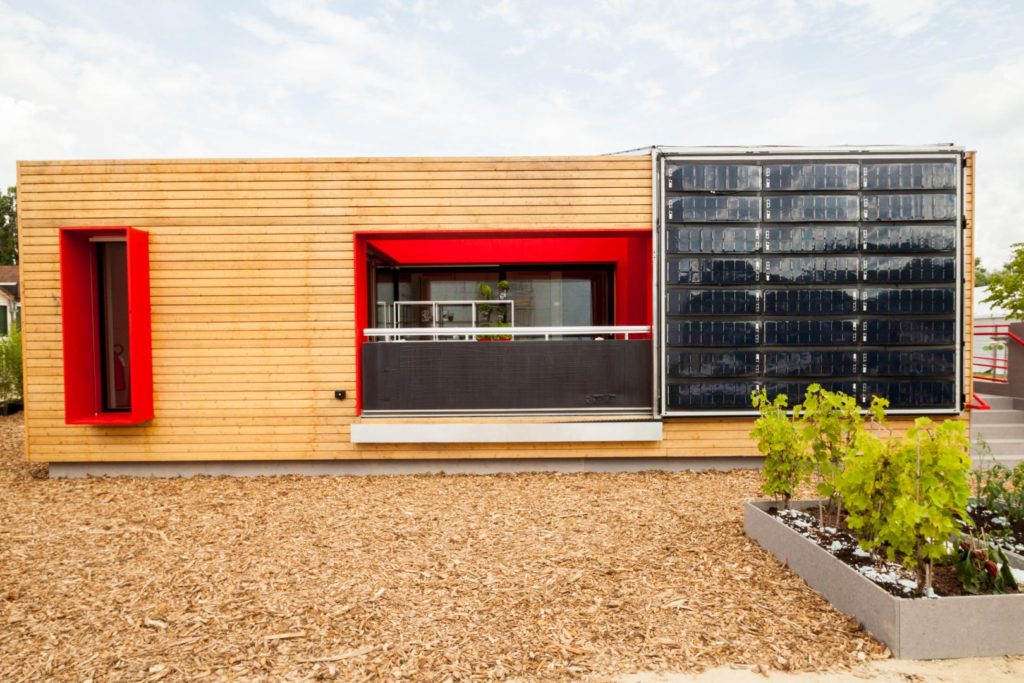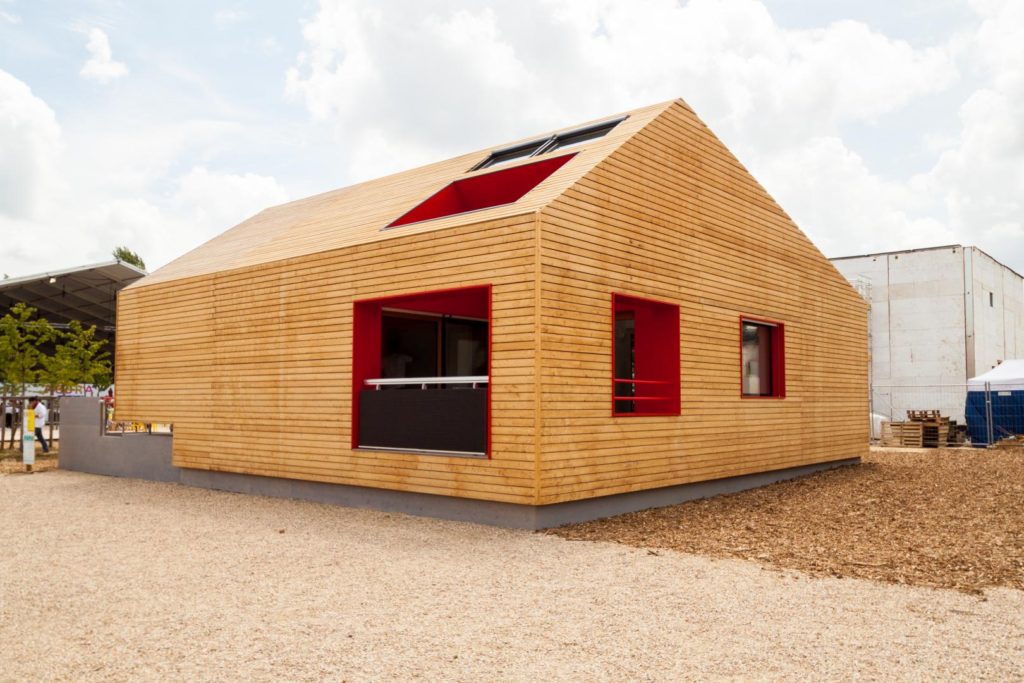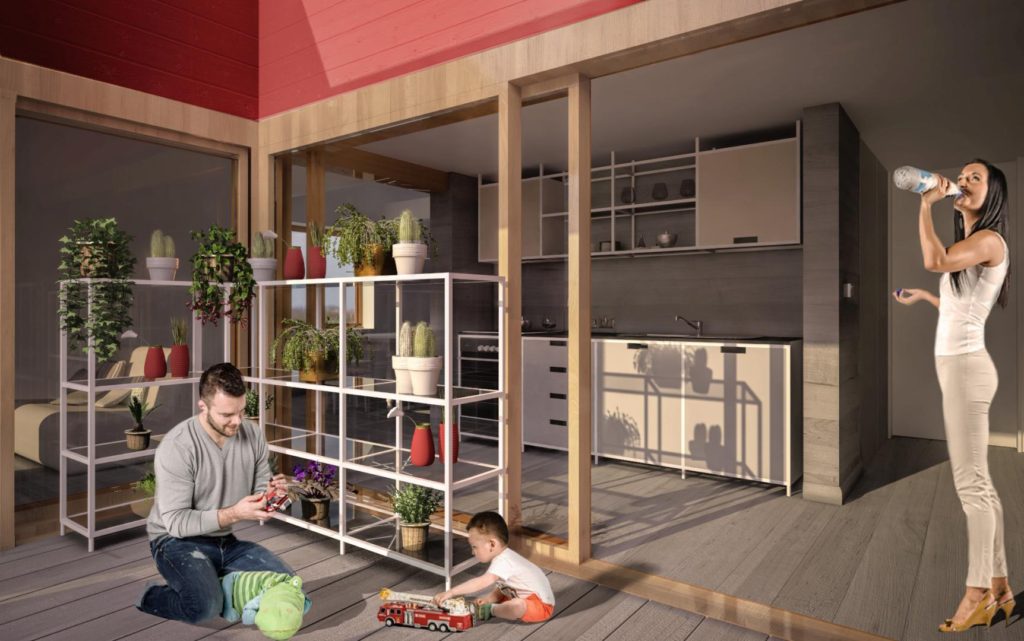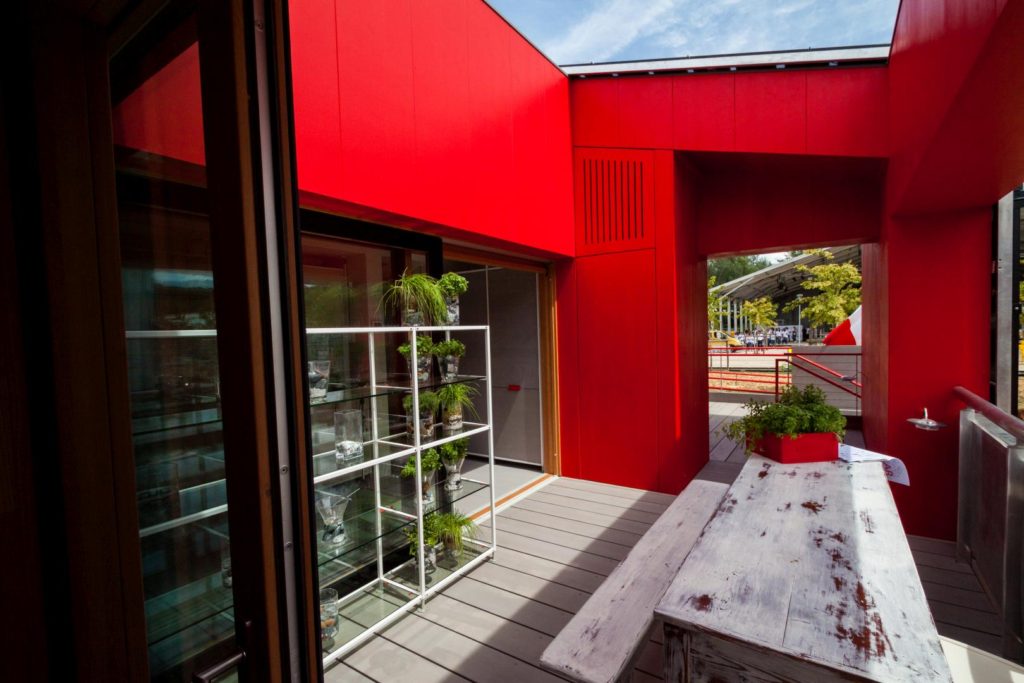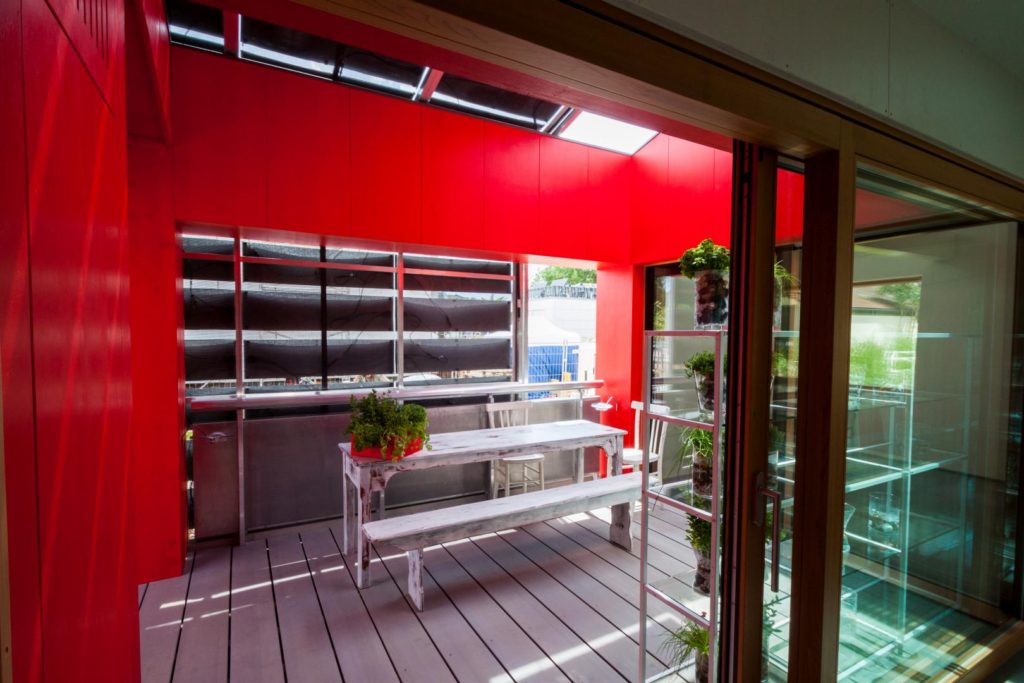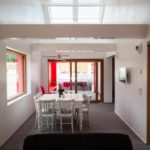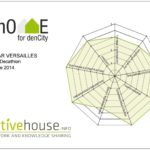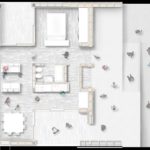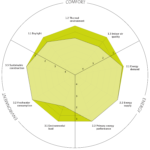Rhome
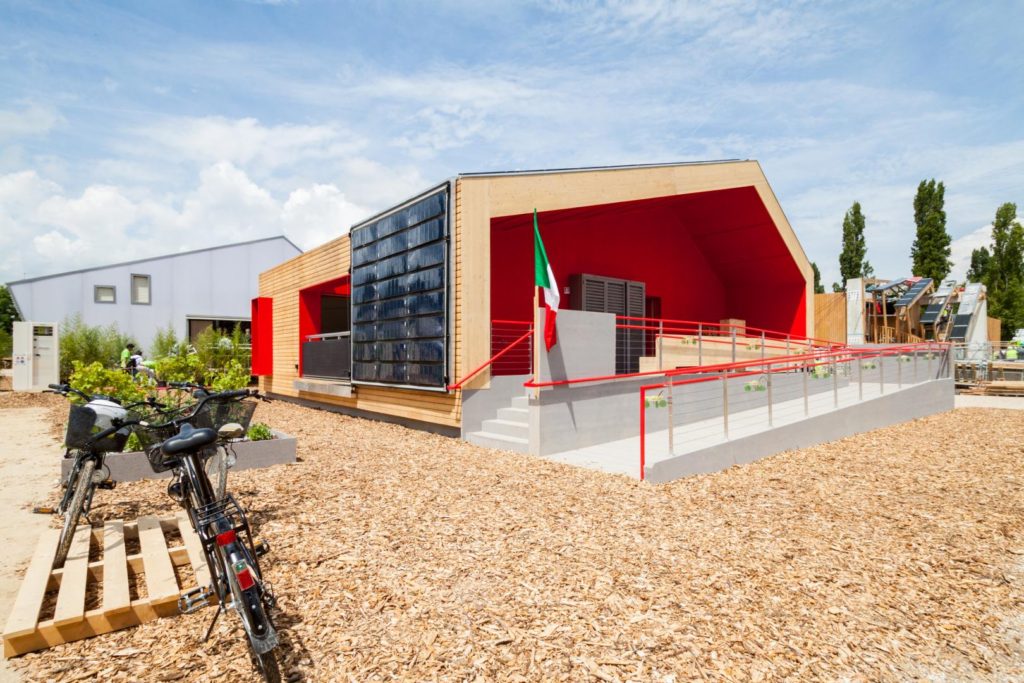 THE VISION
THE VISION
RhOME is the perfect examples of integration between architecture and sustainability. It is a prototype for Solar Decathlon competition 2014, an annual international competition born in 1999 in America, promoted by the Department of Energy of the Government of the United States of America. The goal is to design a perfect small living space that could be an innovative solution for energy problem in dwellings. In 2014 the competition took place in Versailles, France, and only twenty selected university teams from all over the world faced each other in designing building and simulating a real domestic life in a high energetic efficiency residential building, exclusively powered by solar energy. The design take in count not only the energetic production, but also the whole design process: from the choice of materials to the management of the waste.RhOME, in particular, is designed following the Active House Protocol, using the radar as a tool for giving the right directions for improvement, in order to achieve the best result possible. The building is seen as an efficient machine that optimize the whole comfort and minimize energy consumption.
The key words of the project are: REDUCE – REUSE- INNOVATION
Reduce the energy need from an external grid and the impact of the house on the environment, Reuse natural materials, water and components and Innovation in the solutions that help different technologies to work in a synergic way in order to answer well to different requests, as energetic performance and indoor comfort.
THE PROJECTThe building is designed using different parametric simulations software to predict and optimize the behaviour and to validate the choices. The process started with deep studies of macroclimate characteristics, in order to understand favourable and not conditions on which the project could be structured on or not. To assure the maximum level of sustainability possible, the designers weight their choices very carefully: “from the building morphology, to the envelope materials, from the interaction between active and passive strategies, to the innovative use of thermal mass, from the engineering equipment to the effective system of management, and finishing with an urban strategy focusing on the continuous transformation of the waste into a resource for a subsequent process.”
The prototype for Versailles is the 60 m2 top floor of the urban compound. The central 3d core of the building is not only the living centre but also the structural one of the house, defining the space around. This solution makes possible to have different configuration of the spaces and rooms, in order to have an adaptable solution to different context. The solution to the orientation problem, the first step for a sustainable design, is a double exposure that therefore ensures both an adequate availability of direct sunlight and a natural cross-ventilation contributing to indoor comfort. The contribution of natural ventilation was also analysed with a dynamic simulation software (Autodesk Simulation CFD).
Since the best energy gain is the energy saving, great attention has been paid to the envelope design. The building is composed with an innovative solution of prefab wall, made of a low tech wooden structure and insulation. Before the cladding layer there is a strategic ventilation gap, that reduce the heat load in summer caused by direct solar radiation. Since that in warm and hot climates the use of the mass can be very effective to reduce the cooling loads, a massive layer is added to the envelope. This is made by sand taken from the materials resulting from the planned demolitions of urban regeneration intervention processes or otherwise from recycled materials. The big contribution of this layer is maximize in middle season, where, only using the natural ventilation and the heat recovery system, is possible to reach easily the comfort temperature. After the minimization of energy demands, the second step for a sustainable design is the analysis of different possible integrate architectural solutions for energy production. RhOME has two innovative solar production devices: a Flexible Photovoltaic Panel (tiltable and slidable, to shade also the South loggias) and the Thermodynamic Baluster, that can be placed on the facade. This system is very innovative because it can produces hot water using only air temperature, every day of the year, thanks to the negative temperature of the fluid in the pipes. The perfect integration with the architecture assures that these elements could be used also for other funciotns, as solar screen and loggia’s baluster. On an urban scale point of view an intelligent network is designed to collect and reuse water: the grey and black water are purified from a centralized treatment system, the urban gardens produce vegetables to sell and generate compost that fertilizes the fields from which they are produced.
RESULTSThe total energy consumption in Contest Week is very low: only 3.48 kWh/mq. The different percentage for use are:
- Cooling = 55.50 %
- Ventilation = 0.19 %
- Domestic Hot Water= 7.43 %
- Lighting = 1.85 %
- Appliances = 26.60 %
- Monitoring= 8.41 %.
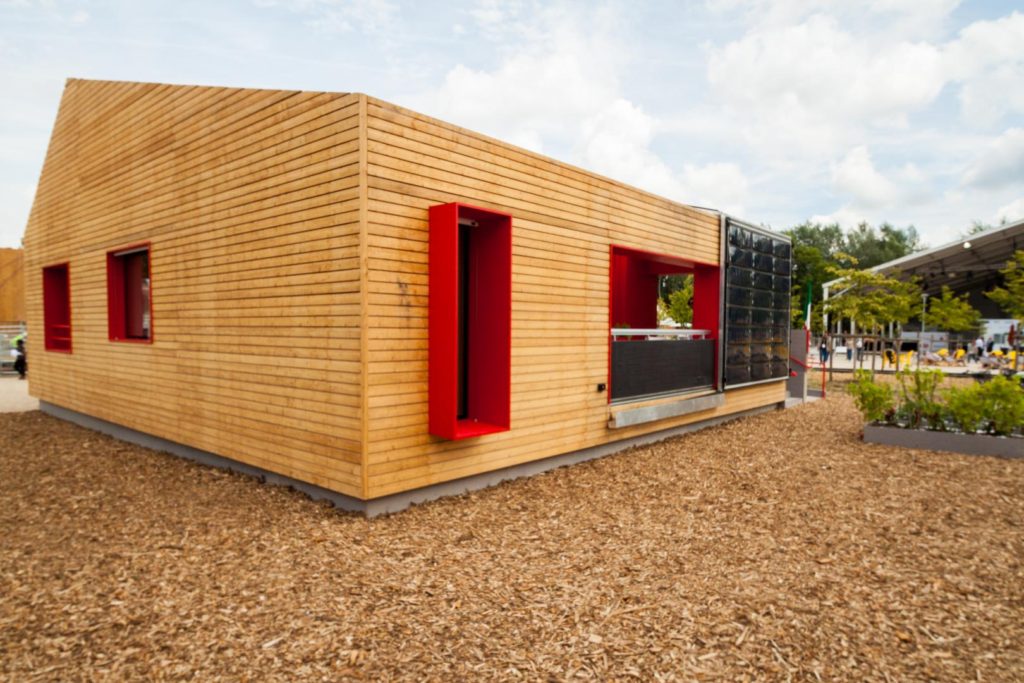 TEAM RhOME
TEAM RhOME
Professors: Chiara Tonelli, Gabriele Bellingeri, Maria Grazia Cianci, Stefano Converso, Roberto De Lieto Vollaro, Luigi Franciosini, Marco Frascarolo, Michele La Rocca, Francesco Lidozzi, Costanza Nosi, Alfredo Passeri, Carlo Alberto Pratesi, Chiara Pepe, Ginevra Salerno, Luca Solero
Students: Giulia Assogna, Gabriele Battista, Luca Bigarelli, Sara Boraschi, Francesca Bottaro, Manuel André Bottiglieri, Michele, Caltabiano, Giuseppe Campanile, Michele Cappuccio, Barbara Cardone, Emiliano Carnielo, Ugo Carusi, Cristina Casadei, Paolo Cioffi, Alessio Clarizio, Federico Corazza, Flaminia De Rossi, Massimo Del Buono, Camilla Desideri, Chiara Di Battista, Francesca Di Benedetto, Filippo Mattia Dobrovich, Arianna Dolce, Luca Evangelisti, Edoardo Franchi, Roberta Franza, Ilaria Grugni, Stefano Latella, Paola Lenzoni Milli, Francesca Marino, Chiara Melchionna, Ilaria Montella, Valentina Moro, Nicola Moscheni, Elena Oetiker, Vincenzo Panasiti, Pierangelo Perna, Matteo Persanti, Cristiano Piagnerelli, Silvia Pinci, Lorenzo Pirone, Matteo Pisani, Lorenzo Procaccini, Andrea Rastrello, Patrizia Recco, Angelo Romano, Gabriele Roselli, Valerio Sabatini, Rodrigo Salsedo, Marco Sinopoli, Elena Ugolini, Giuliano Valeri, Antonio Vellucci, Marta Vignali, Valeria Vitale
TEAM Active House Certification : Politecnico di Milano: Marco Imperadori, Graziano Salvalai, Arianna Brambilla

